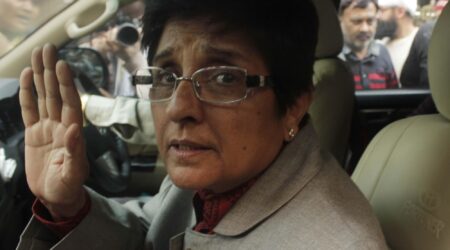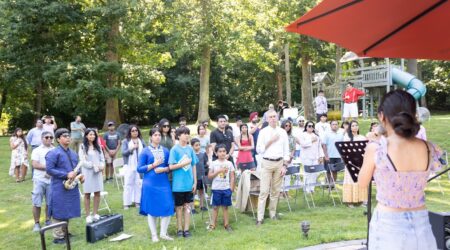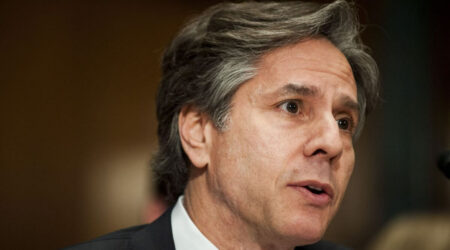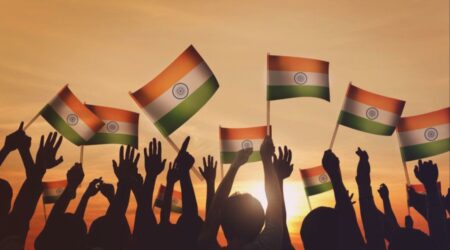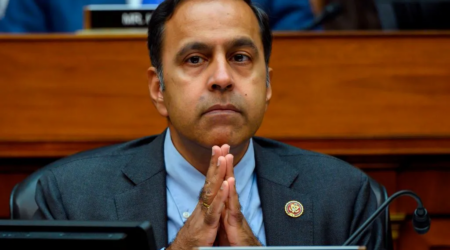On May 16, The Association of Indians In America (AIA) National Executive Committee organized a conference on What is Awareness and Empathy and How Can We Increase Them In Us?
The idea of this conference was conceived by Gobind P. Munjal, President of National AIA, Asmita Bhatia, Trustee, AIA and Professor Shivaji Sengupta of Boricua College who recently retired as Professor of English and its Academic VP. Boricua is a small, private, not for profit liberal arts institution in New York City. As vice president, he worked with the full-time faculty to develop awareness and empathy so that they may be better facilitators of learning. He was thus invited to lead the discussion.
The meeting opened at 8:30 PM. There were over 42 attendees, all participating via Zoom.
Gunjan Rastogi, the National AIA Secretary, introduced National AIA President Gobind Munjal.
Munjal said in his introduction he said that we are living in a sharply divided world. On one side there is the war in Ukraine which shows no signs of abating and internally, sharp differences between the political parties and social groups were tearing the country apart with unrest and violence. These are all happening because of a lack of communication between people. In this milieu, Munjal said, it would be a good idea to discuss awareness and empathy, and how developing them may help others.
Sengupta began the discussion by explaining what he means by awareness and empathy. Awareness is being conscious, not only of the environment around us, the atmosphere, the people, and nature, but also conscious of how we are feeling as we are aware of them. It is the latter – how we are feeling – that is hard for us to be aware of, Sengupta said. Empathy is the ability to gauge the feeling of a person one is in the company of. This ability to “be in someone else’s shoes,” as they say, the ability to communicate with feeling and self-awareness, is empathy.
But awareness and empathy cannot happen without contact. Sengupta explained contact as not only being in touch with someone but being aware of the nature of the contact itself. Are we happy, sad, troubled, or anxious about being in contact with a particular person? Contact, he said, is not instantaneous and sudden. It is a process. Awareness is its consequence. We need to nurture contact if we are to develop empathy.
Empathy, unlike sympathy, is active. When in empathy, we reach out to help. Sympathy is more intellectual, and aloof; empathy is affective. Affect is our ability to monitor our feelings, be aware of them before we react. Empathy is functional; sympathy, inert.
Thus, Professor Sengupta established a continuum between Contact, Awareness and Empathy. He said there are other elements that we need to know to enhance awareness and empathy such as field and energy that the Bhagwat Gita calls kshetra. There is also the notion of control and difference. All of this helps someone to work with differences among people, to bring about mutual understanding and empathy and resolve conflicts. However, given the complex subject, he said he would explain these terms at a subsequent session.
The presentation lasted about 20 minutes. It was followed by lively discussions by most of the participants. Some of the questions were about Covid. Since Covid has affected so many millions of people in the world, for well over two years, and counting, could it have affected people’s awareness, since awareness depends on contact? It was an excellent question. Sengupta responded that theoretically, yes. But there needs to be thorough research to prove his hypothesis. Other questions were about explanations of terms. Participants asked for clarifications and examples.
It was decided at the end of the meeting to hold another session roughly in about a month. The audience was enthusiastic and receptive to the idea. The three moderators, Gunjan Rastogi, Santosh Pandey and Nilima Madan handled the conference with awareness and sensitivity. Rastogi thanked all the former National AIA Presidents, Chapter Presidents, National Executive Committee and Chapters members, community leaders and invited guests for attending and participating in this conference and making it a huge success.





